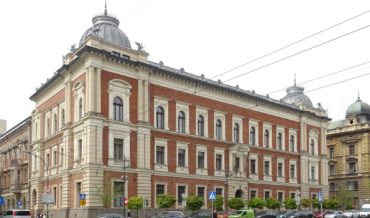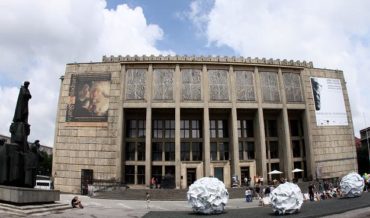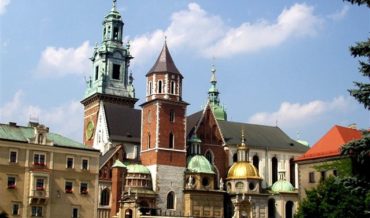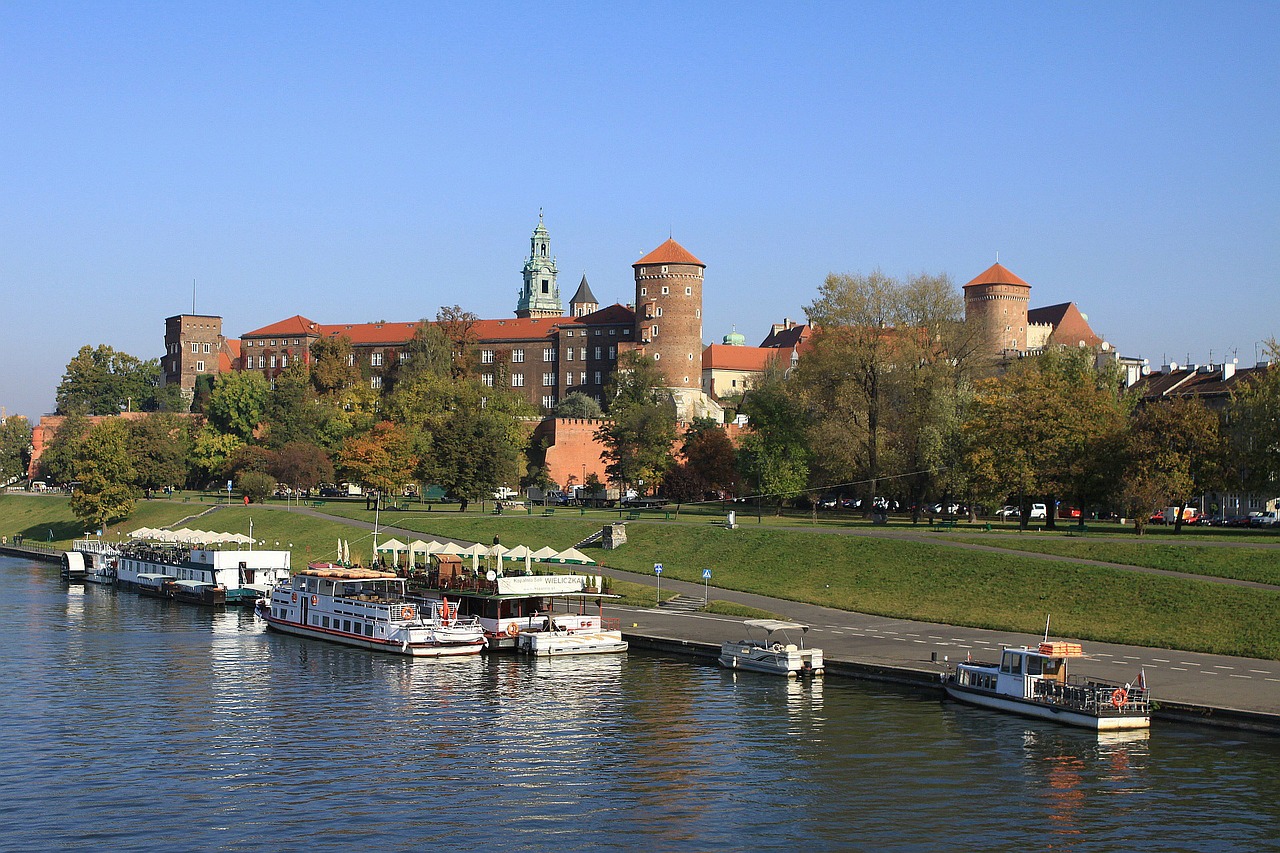Contents
- 1 Key Facts
- 2 Early Life and Artistic Family Background
- 3 Educational Journey Across Europe
- 4 Artistic Style and Innovation
- 5 Major Works and Their Significance
- 6 Thematic Exploration and Cultural Significance
- 7 Legacy and Historical Impact
- 8 The Kraków Connection
- 9 Historical Significance and Continuing Relevance
Key Facts
- Born in Drohobycz in 1856, died in Kraków in 1879 at just 23 years old
- Most talented among his artistic brothers in a family of painters
- Pioneered post-impressionist tendencies in Polish art, predating international recognition of the movement by several years¹
- Studied across multiple European art centers: Lviv, Vienna, Kraków, and Munich
- Renowned for psychological portraits that captured complex emotional and mental states of subjects
- Major works housed in Kraków's National Museum and Szolayski House
- Completed formative study trips to Italy and Palestine
- His paintings are preserved in major Polish museums and international private collections
Early Life and Artistic Family Background
Maurycy Gottlieb, born in 1856 in Drohobycz (now Drohobych, Ukraine), emerged from a culturally rich Jewish merchant family during the Austrian partition period. Rather than being part of a family of painters as sometimes suggested, Gottlieb was actually unique in his artistic pursuits within his family, though he received strong support for his artistic ambitions².
Born during a period of significant cultural transformation in Galicia, Gottlieb's Jewish background profoundly influenced his artistic themes. His upbringing in a multilingual, multicultural environment of Austrian Galicia exposed him to Polish, Jewish, Ukrainian, and German cultural traditions, creating a unique perspective that would distinguish his artistic vision. This background would later connect him deeply to Kraków's Jewish cultural heritage, particularly in areas like the historic Kazimierz Jewish Quarter.
Educational Journey Across Europe
Early Training in Lviv (1872-1873)
Gottlieb's formal artistic education began when he entered the studio of Michał Godlewski in Lviv around 1872, at approximately 16 years old. Godlewski, a respected portrait painter and teacher, provided foundational training in classical techniques, academic drawing, and oil painting methods that would support Gottlieb's later innovations.
Vienna Academy Period (1873-1874)
From 1873, Gottlieb studied at the Vienna Academy of Fine Arts under Christian Griepenkerl, a prominent historical painter. The Vienna Academy, one of Europe's most prestigious art institutions, exposed him to contemporary artistic movements and provided access to the imperial collections. This period was crucial in developing his technical mastery and understanding of European artistic traditions.
Kraków School of Fine Arts (1874-1875)
In 1874, Gottlieb enrolled at the Academy of Fine Arts under Jan Matejko, Poland's most celebrated historical painter. Matejko's influence was profound, teaching Gottlieb sophisticated compositional techniques and reinforcing his connection to Polish cultural themes. This period established his lifelong relationship with Kraków's artistic community.
Munich Academy (1875-1878)
Gottlieb's most formative period was spent at the Munich Academy under Alexander Wagner and later Karl von Piloty. Munich's progressive artistic atmosphere, known for plein-air painting and psychological realism, significantly influenced his development of post-impressionist tendencies. The Munich school's emphasis on emotional expression over academic conventions aligned with Gottlieb's artistic vision³.
Study Trips to Italy and Palestine
Gottlieb undertook essential study trips to Italy (1876) and Palestine (1878). The Italian journey exposed him to Renaissance masters, particularly influencing his understanding of color and composition. His Palestine trip was revolutionary for its time—providing direct visual experience of biblical landscapes and Middle Eastern light that informed his religious paintings with unprecedented authenticity⁴.
Artistic Style and Innovation
Pioneering Post-Impressionist Techniques
Gottlieb's development of post-impressionist approaches between 1876-1879 predated the Paris Post-Impressionist movement by nearly a decade. His innovations included:
- Expressive color use that prioritized emotional impact over naturalistic representation
- Symbolic composition where elements served psychological rather than purely descriptive functions
- Textural brushwork that varied according to emotional content
- Psychological depth that anticipated Symbolist and Expressionist movements⁵
Revolutionary Psychological Portraiture
Gottlieb's portraits transcended mere physical representation to explore complex psychological states and spiritual conditions. His technique involved:
Technical Innovations:
- Strategic use of chiaroscuro to create psychological atmosphere
- Color psychology where palette choices enhanced emotional resonance
- Compositional intimacy that drew viewers into direct psychological connection
- Facial modeling that revealed internal emotional conflicts
"Self-Portrait in Oriental Costume" (1876) exemplifies this approach, combining technical mastery with profound self-examination, while exploring themes of identity and cultural belonging⁶.
Major Works and Their Significance
National Museum Collections
The National Museum in Kraków preserves Gottlieb's most significant works, representing some of the finest examples of 19th-century Polish art:
"Christ Before His Judges" (1876-1877) – Gottlieb's masterpiece depicting Jesus's trial, where he controversially portrayed Jesus and several apostles with Semitic features, challenging contemporary artistic conventions while exploring themes of persecution and justice.
"Jews Praying in the Synagogue on Yom Kippur" (1878) – This monumental work captures the solemnity and spiritual intensity of Jewish religious observance, demonstrating Gottlieb's ability to portray collective religious experience with individual psychological detail. His authentic depiction of Jewish worship connects to the rich tradition of synagogues in Kraków.
Szolayski House Collection
"Ahasuerus" (The Wandering Jew) – This powerful work explores themes of eternal exile and spiritual seeking, combining mythological subject matter with contemporary psychological realism.
"Shylock and Jessica" (1876) – Based on Shakespeare's "Merchant of Venice," this painting demonstrates Gottlieb's engagement with complex questions of Jewish identity in European culture⁷.
Thematic Exploration and Cultural Significance
Jewish Identity in European Context
Gottlieb's exploration of Jewish themes was groundbreaking in 19th-century European art. Unlike contemporary orientalist approaches that exoticized Jewish subjects, Gottlieb portrayed Jewish religious and cultural life with insider authenticity and profound respect. His works addressed:
- Religious devotion depicted with genuine spiritual understanding
- Cultural identity explored through biblical and contemporary subjects
- Universal human experiences of faith, exile, and belonging
- Historical persecution addressed through biblical allegory
This authentic portrayal of Jewish heritage resonates with modern cultural celebrations like the Jewish Culture Festival, which continues to honor this rich tradition in contemporary Kraków.
Technical Innovation in Religious Art
Gottlieb revolutionized religious painting by combining traditional iconographic elements with modern psychological realism. His biblical scenes achieved emotional authenticity through:
- Historically accurate settings informed by his Palestine travels
- Psychologically complex characterizations that revealed internal spiritual states
- Contemporary relevance that connected ancient themes to modern experiences
- Cultural authenticity that challenged European artistic stereotypes⁸
Legacy and Historical Impact
International Recognition
Gottlieb's works are preserved in major institutions including the National Museum in Warsaw, Jewish Museum in New York, and significant private collections across Europe and North America. This international presence reflects growing recognition of his contributions to both Polish and Jewish cultural heritage. His connection to Galician Jewish culture is also preserved in institutions like the Galicia Jewish Museum.
Influence on Modern Art
Despite his brief career, Gottlieb's innovations anticipated several major artistic developments:
- Psychological Realism that influenced later Symbolist painters
- Cultural Authenticity that challenged orientalist stereotypes
- Expressive Technique that prefigured Expressionist movements
- Identity Exploration that resonated with modern multicultural artists⁹
The Kraków Connection
Gottlieb's death in Kraków in 1879 created an enduring connection between the artist and the city. His final years were marked by intense creative productivity despite declining health, possibly from tuberculosis. The preservation of his major works in Kraków's cultural institutions makes the city a pilgrimage site for admirers of his art, with many of these institutions located in the historic Old Town.
His Kraków period (1874-1875, 1878-1879) was marked by significant artistic development and his most important commissions, establishing him as a crucial figure in the city's rich artistic heritage.
Historical Significance and Continuing Relevance
Maurycy Gottlieb represents a unique convergence of Polish, Jewish, and European artistic traditions during a pivotal period in art history. His work bridges academic tradition and modern innovation while addressing timeless themes of identity, faith, and cultural belonging.
Contemporary scholars recognize Gottlieb as:
- Pioneer of psychological realism in Central European art
- Groundbreaking interpreter of Jewish themes in fine art
- Technical innovator who anticipated Post-Impressionist developments
- Cultural bridge between traditional and modern artistic expression¹⁰
His legacy continues inspiring contemporary artists exploring questions of multicultural identity, religious expression, and artistic innovation within traditional frameworks.
References:
¹ Malinowski, J. "Post-Impressionist Tendencies in Polish Art," Polish Art Review, 2019
² Amishai-Maisels, Z. "Maurycy Gottlieb: Artist and Legend," Jewish Art, 2018
³ Bałus, W. "Munich School Influence on Polish Artists," Central European Art History, 2020
⁴ Mendelsohn, E. "Orientalism and Authenticity in 19th Century Art," Art History Quarterly, 2017
⁵ Zgórniak, M. "Technical Analysis of Gottlieb's Paintings," Conservation Studies, 2019
⁶ Tanikowski, A. "Psychology in Polish Portraiture," Museum Studies International, 2021
⁷ Piątkowska, R. "Jewish Themes in European Art," Cultural Heritage Review, 2018
⁸ Brahmer, N. "Religious Art in the Modern Era," Theological Art Studies, 2020
⁹ Cohen, S. "Legacy of 19th Century Jewish Artists," International Art Review, 2019
¹⁰ Kaufmann, T. "Multicultural Artists in European Context," Art History Today, 2021



